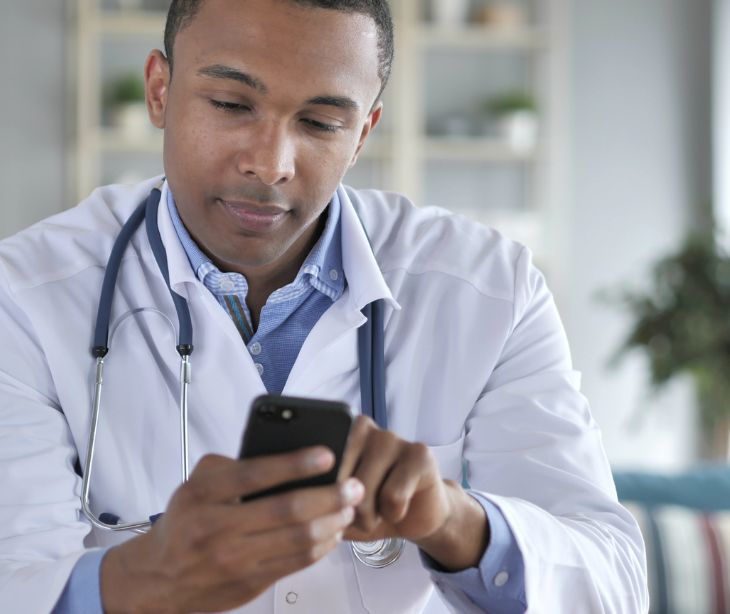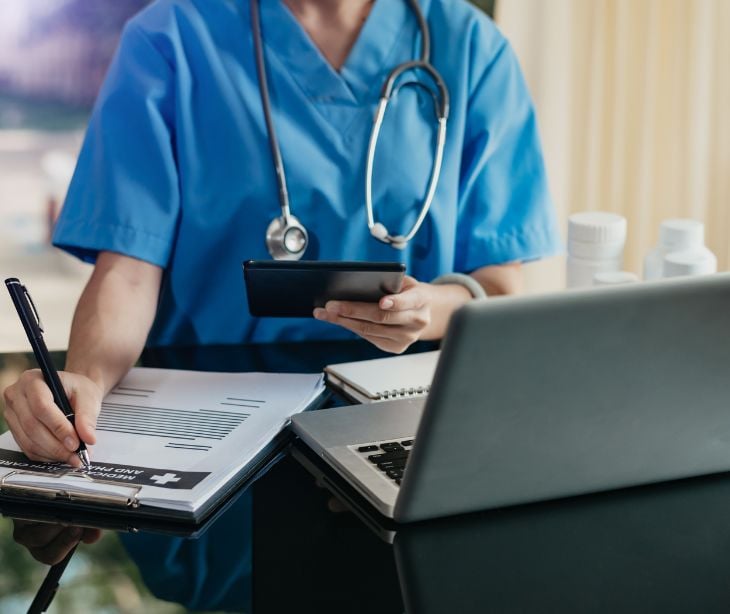1 min read
Can healthcare providers use personal devices for patient communication?
Liyanda Tembani
December 06, 2023

Healthcare providers can use personal devices for patient communication, but it requires careful handling. Following HIPAA guidelines, providers must assess information sensitivity, ensure strong device security, and use secure communication channels.
The benefits of using personal devices
Personal devices, from smartphones to tablets, empower healthcare providers by granting enhanced accessibility and efficiency. They can streamline processes, enabling rapid responses and improved care coordination. Beyond efficiency, they foster patient engagement, creating a more connected healthcare experience.
Recognizing risks in personal device use
It's important to be aware of the risks of unauthorized access when using personal devices.
- The potential threat of device loss or theft poses a significant risk to protected health information (PHI).
- Vulnerabilities to malware and challenges in securing communication channels expose patient information to potential breaches.
In healthcare, patient data could be exposed to unsecured networks or public Wi-Fi connections, which increases the chances of unauthorized access and data breaches. Taking appropriate security measures when using personal devices is crucial to minimize these risks.
There are considerations for providers to make when deciding to use personal devices for patient communication:
- Assess information sensitivity: Evaluate the nature and sensitivity of the information being exchanged. This involves categorizing data based on its level of confidentiality. That ensures that PHI isn't communicated via personal devices.
- Ensure robust device security: Implement stringent security measures on personal devices for patient communication. That includes enabling encryption, setting up secure authentication methods like passcodes or biometrics, and regularly updating device security software to mitigate potential risks.
- Use HIPAA compliant communication channels: Opt for secure communication channels to transmit patient data. Use HIPAA compliant email services or dedicated messaging applications that comply with healthcare regulations to maintain the confidentiality and integrity of patient information during transmission.
Mitigating risks and best practices
- Establish comprehensive policies and guidelines to manage the use of personal devices.
- Educate healthcare staff extensively on the risks, guidelines, and security measures associated with using personal devices to foster a culture of awareness and compliance.
- Continually monitor and enforce compliance measures to ensure that patient data remains secure.
- Conduct regular audits and assessments of device security protocols and communication channels to identify and promptly address vulnerabilities.
Subscribe to Paubox Weekly
Every Friday we'll bring you the most important news from Paubox. Our aim is to make you smarter, faster.




